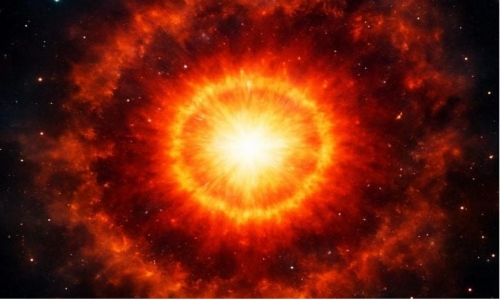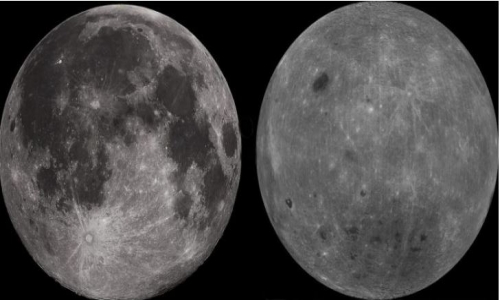


 2:8:6
2:8:6  2025-04-16
2025-04-16  879
879

A team of researchers has discovered a clever way to turn falling water droplets – like those from rain – into usable electricity.
By channeling droplets through a narrow vertical tube to create “plug flow,” they were able to separate electrical charges and harvest energy with surprising efficiency. This simple setup not only overcame the inefficiencies of traditional charge separation methods but also produced enough power to light 12 LEDs. With potential applications on rooftops and in urban environments, this innovative system could offer a sustainable and low-cost alternative to hydroelectric power.
Harnessing Static Electricity in Motion
When two materials touch, the charges on their surfaces can shift – a familiar example is the static electricity you get from rubbing a balloon on your skin. Similarly, when water flows over certain surfaces, it can pick up or lose electrical charge. Now, researchers reporting today (April 16) in ACS Central Science have tapped into this effect to generate electricity using rain-like droplets flowing through a narrow tube. The system produces enough power to light 12 LEDs.
“Water that falls through a vertical tube generates a substantial amount of electricity by using a specific pattern of water flow: plug flow,” says Siowling Soh, the study’s corresponding author. “This plug flow pattern could allow rain energy to be harvested for generating clean and renewable electricity.”
Why Traditional Hydroelectric Power Falls Short
Conventional hydroelectric power works by moving large volumes of water to turn turbines. But this only works in places with ample water, like rivers. For smaller, slower water flows, researchers have explored an alternative: charge separation. This process generates electricity as water flows through a channel lined with a conductive surface. However, it’s highly inefficient because charge only builds at the surface the water touches.
To improve efficiency, scientists have tried using micro- and nanoscale channels to increase surface area. But these channels are so small that water doesn’t flow through them easily—and pumping it through uses more energy than the system produces. To solve this, Soh, Chi Kit Ao, and their team looked for a way to generate electricity using larger channels that rainwater can naturally pass through.
Designing a Plug Flow Power Generator
The team designed a simple setup whereby water flowed out the bottom of a tower through a metallic needle and spurted rain-sized droplets into the opening of a 12-inch-tall (32-centimeter-tall) and 2-millimeter-wide vertical polymer tube. The head-on collision of the droplets at the top of the tube caused a plug flow: short columns of water interspersed with pockets of air. As water flowed down the inside of the tube, electrical charges separated. The water was then collected in a cup below the tube. Wires placed at the top of the tube and in the cup harvested the electricity.
A Major Boost in Efficiency
The plug flow system converted more than 10% of the energy of the water falling through the tubes into electricity. And compared to water flowing in a continuous stream, plug flow produced 5 orders of magnitude more electricity. Because the droplet speeds tested were much slower than rain, the researchers suggest the system could be used to harvest electricity from falling raindrops.
In another experiment, the researchers observed that moving water through two tubes, either simultaneously or sequentially, generated double the energy. Using this information, they channeled water through four tubes, and the setup powered 12 LEDs continuously for 20 seconds. The researchers say that plug flow energy could be simpler to set up and maintain than hydroelectric power plants, and it could be convenient for urban spaces like rooftops.
Reality Of Islam |
|

Astronomers

Cosmologist

Scientists
 9:3:43
9:3:43
 2018-11-05
2018-11-05
10 benefits of Marriage in Islam
 7:5:22
7:5:22
 2019-04-08
2019-04-08
benefits of reciting surat yunus, hud &
 9:45:7
9:45:7
 2018-12-24
2018-12-24
advantages & disadvantages of divorce
 11:35:12
11:35:12
 2018-06-10
2018-06-10
 6:0:51
6:0:51
 2018-10-16
2018-10-16
 2:42:26
2:42:26
 2023-02-02
2023-02-02
 1:34:8
1:34:8
 2022-02-01
2022-02-01
 6:0:8
6:0:8
 2023-03-19
2023-03-19
 6:28:21
6:28:21
 2022-12-20
2022-12-20
 7:32:24
7:32:24
 2022-02-14
2022-02-14
 9:39:36
9:39:36
 2022-12-28
2022-12-28
 8:19:41
8:19:41
 2018-06-21
2018-06-21
 5:41:46
5:41:46
 2023-03-18
2023-03-18
| LATEST |